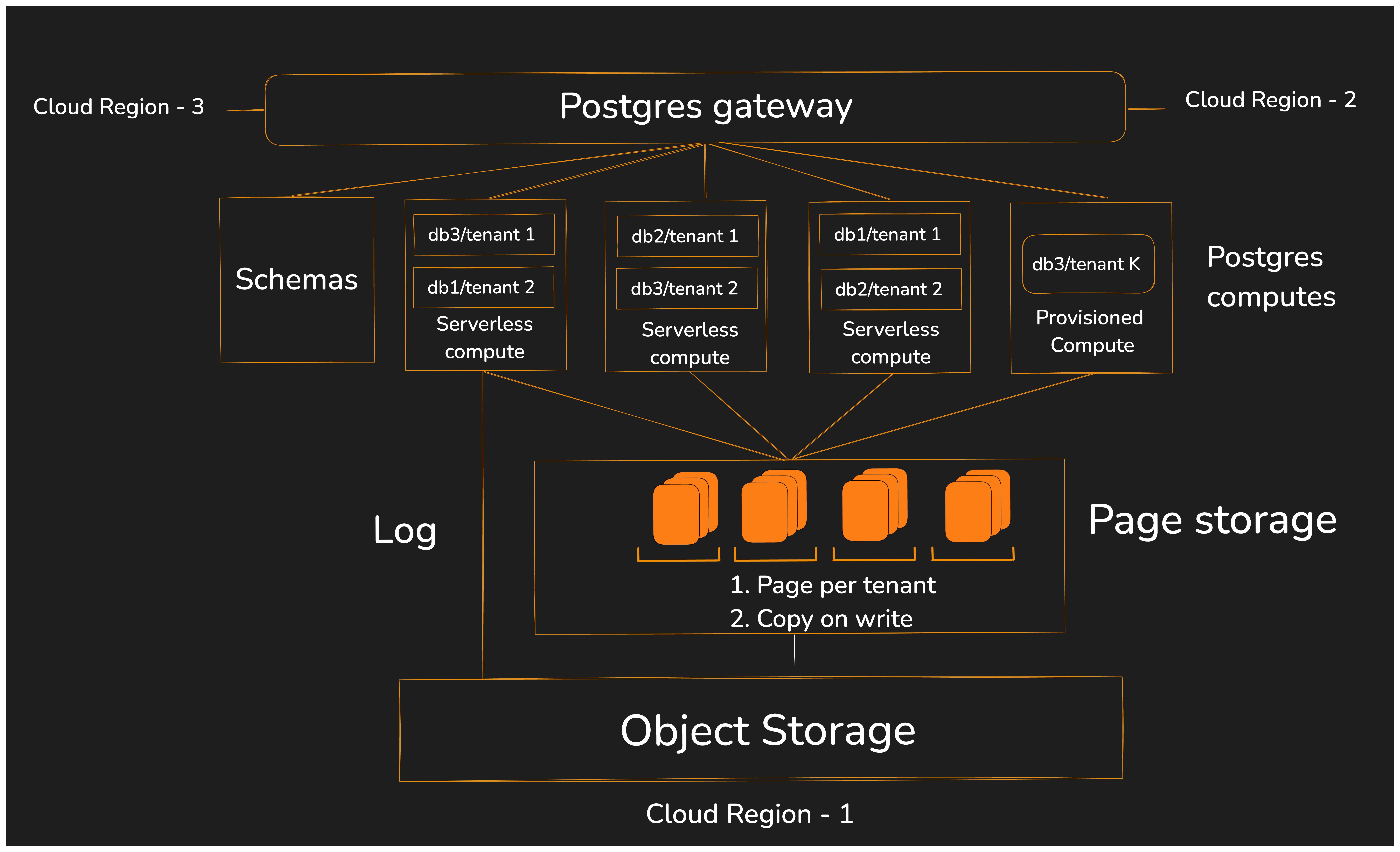Nile has built Postgres from the ground up with tenants/customers as a core building block. The key highlights of our design are:
Decoupled storage and compute. The compute layer is essentially Postgres, modified to store each tenant's data in separate pages. The storage layer consists of a fleet of machines that house these pages. An external machine stores the log, while both the log and pages are archived in S3 for long-term storage.
Tenant-aware Postgres pages. A typical Postgres database comprises objects like tables and indexes, represented by 8KB pages. In Nile, tables are either tenant-specific or shared. Each page of a tenant table belongs exclusively to one tenant, with all records within a page associated with that tenant. This decoupled storage and tenant-dedicated page system allows for instantaneous tenant migration between different Postgres compute instances. Moving a tenant simply involves transferring tenant leadership from one compute instance to another while maintaining references to the same pages in the storage layer.

Support for both serverless and provisioned compute. The Postgres compute layer offers two types of compute. Serverless compute is built with true multitenancy, while provisioned compute is dedicated to a single Nile customer. Nile users can have any number of provisioned compute instances in the same database. Tenants can be placed on either serverless or provisioned compute.
Distributed querying across tenants and a central schema store. The distributed query layer operates across tenants and functions between serverless and provisioned compute instances. A central schema store employs distributed transactions to apply schemas to every tenant during DDL execution. This ensures correct schema application and enables schema recovery for tenants during failures.
A global gateway for tenant routing, inter-region communication, and connection pooling. The gateway uses the Postgres protocol to route requests to different tenants. It can communicate with gateways in other regions and serves as a connection pooling layer, eliminating the need for a separate pooler.